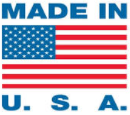How Do Profile Extrusions Work?
Created at : Nov 17, 2022
Profile extrusion is the unique process of producing plastic shapes, pieces, parts and components via extrusion. Profile type extrusion is a system that effectively extrudes many different custom shaped products that can come in an array of forms. It can be done to create both hollow and solid plastic type forms. Products that can be made include everything from window frames and tubing to door seals. To process hollow forms, something called a mandrel is used in the die to produce hollowed out surfaces. A series of hollow parts will require a few different pins.
Unique Material
To manufacture these custom hollow spaces in plastic requires an air source so that the product can maintain its shape and not collapse. Typically, an air source is pulled through to fix any cavity airflow related issues. If multiple materials must be employed to form a certain product, then co-extrusion is used. For instance, a straw used for drinking that has several colors on it demands at least three extruders in total be employed. Each extruder feeds a variation of the unique material being used into a main die for co-extrusion. This unique process can be done on a customized or stock type basis.
Continual in Nature
During the extrusion of plastics as well as resin and other types of raw thermoplastic material, gravity is the primary force that feeds the hoppers and then on to the extruder barrel. UV inhibitors along with colorants and many other additives (typically pellet or liquid form) can be added to the material via the hopper system. This process resembles molding using plastics injection, while the primary difference is that the extrusion process is continual in nature. While injection molding offers many profiles in continuous procedures, usually being reinforced, the completed product is removed from the die instead of extruding the resin fluid from the actual die.
Proportional-Integral-Derivative Controller
With profile extrusions, once materials enter the feed near the back of the barrel, they encounter a rotating screw component. The screw has the effect of forcing the resin into the hot barrel, melting the resin based on a predetermined temperature. In most instances, a heating specific profile is necessary to utilize the proportional-integral-derivative controller to achieve the correct temperatures. This enables plastic resin to melt and then be forced through the barrel, at the same time reducing any possibility of unwanted overheating that could breakdown or degrade the polymer material. At the front of the barrel, the resin is no longer located at the screw and as a result pushes through into a reinforced screen that is intended to decontaminate the materials in use.
Unwanted Stress at Key Point
The reinforcing of the screen, using a breaker plate, is preferred since the PSI at this point can exceed over 5,000. After going through the screen, the resin will then enter the die. The die gives the product a uniquely desired shape and is designed so that the molten plastic flows into the profile shape. Note that uneven flows at this stage could result in unwanted stress at key points of the profile. This can ultimately result in the warping of the shape once it has cooled down. To learn more about this and other custom processes contact Alpha Custom Extrusions today.

